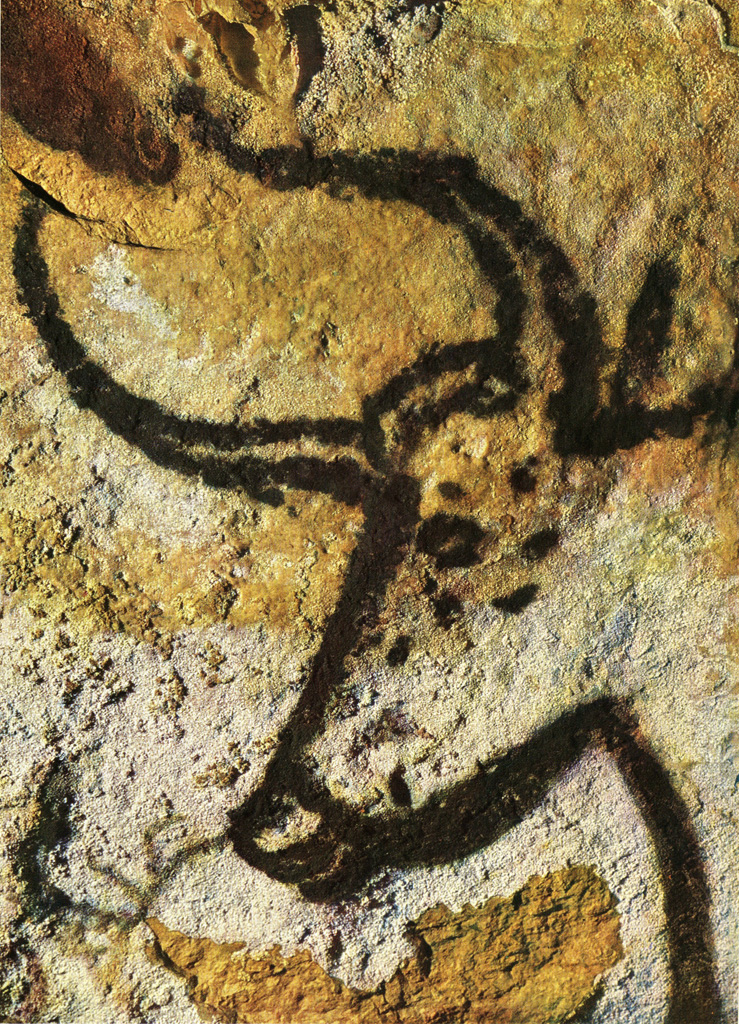The
hunting magic theory sounded plausible and was widely adopted, but lost
influence as the evidence collected. Researchers could determine the
diets of encampments nearest the caves by analyzing the layers, and
found the animals depicted had little correlation to the animals hunted.
Many sites relied chiefly on reindeer herds for food, but pictures of
reindeer were rare, while the horse and bison were the most common.
Very few of the pictures actually had lines through them which might
indicate spears or injuries. All the pictures of supposed missiles,
weapons or blood could just as easily have other meanings. There were
no actual scenes of humans hunting animals. Carnivores, which might
be a problem and need to be killed, were rarely shown (Bahn 152). Bahn
makes an interesting point - excavations of much later Roman sites show
pottery decorated with wild species while bones indicate nearly all
meat from domestic animals (157). The hunting magic theory "fitted
in well with what people in Europe knew about witchcraft" (Lewis-Williams
47), but it was too simple to explain all the complex images.

Prehistoric Painting: Lascaux - or the Birth of Art, text by Georges Bataille, photos by Hans Hinz, Claudio Emmer. Albert Skira publisher, Switzerland, 1955.